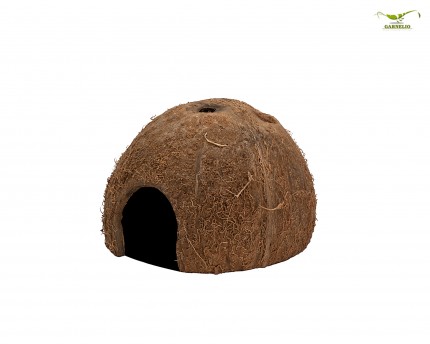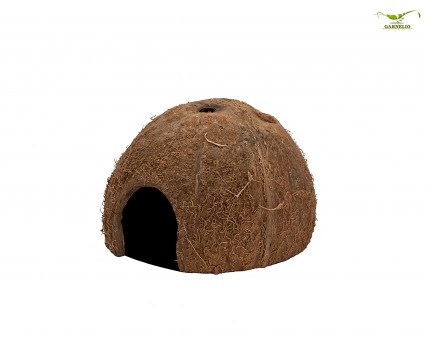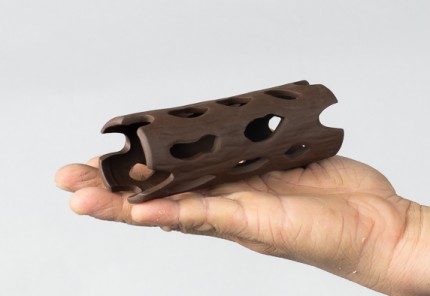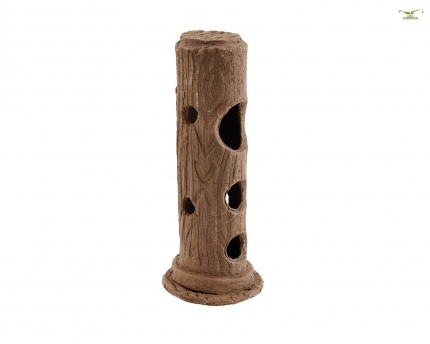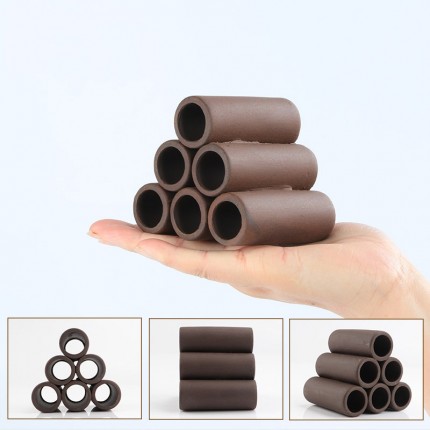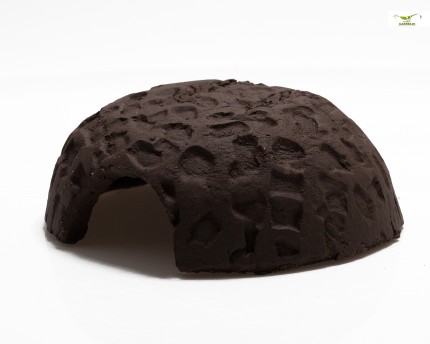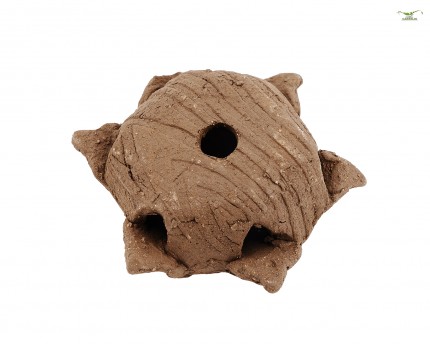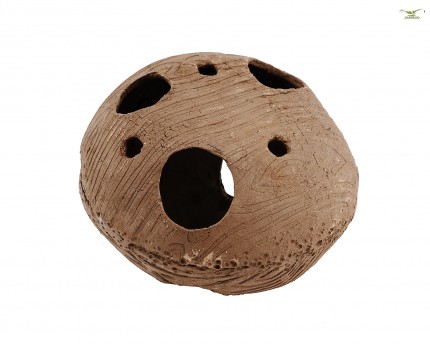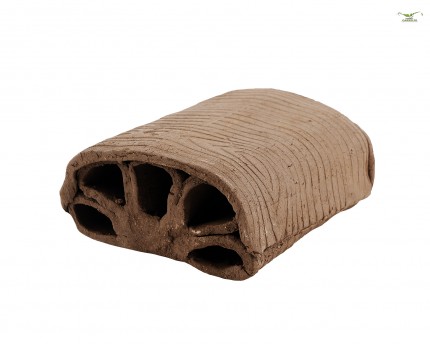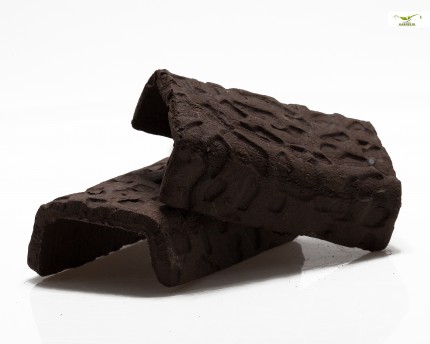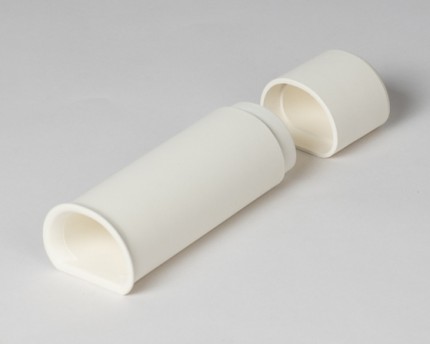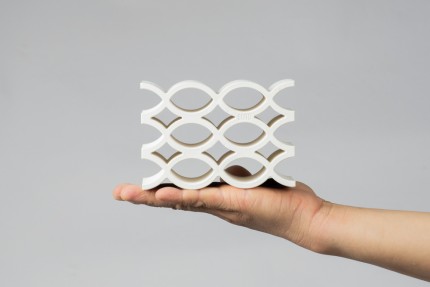Dome-shaped coconut caves and ceramic caves are especially attractive as hiding places for mangrove crabs. Smaller crabs prefer slightly narrower hiding places and caves. If you want to see your land crabs like Geosesarma, which are rather active at night, also during the day, we recommend to place an appropriate cave in the terrarium in such a way that the opening faces the front pane. This way you can see your crab even though it has found shelter in a hiding place appropriate for its species.
The coconut caves and ceramic hiding places can be used both above and below water in the water part of an aquaterrarium set up for crabs. The clay decorations are water neutral.
Especially in the water part of an aquaterrarium or aquarium for crabs, it is very important that pollutants are reliably broken down - crabs crumble incredibly when they eat, and the food residues can pollute the water heavily. This is where the relatively porous surface of the clay caves comes into play, as it can be colonized by bacteria that break down pollutants that come from the decay of organic matter. Urea, ammonium / ammonia and nitrite are broken down by bacterial activity to the less harmful nitrate. Thus, you prevent deterioration of water quality by using burnt clay hiding places in the aquaterrarium in the water part, and you support the filter by doing so.
Most of the ceramic hiding places in this category are lovingly handmade in Germany - truly unique pieces! With their finely structured surface they fit super into the background of an aquaterrarium, terrarium or aquarium and look absolutely natural.

